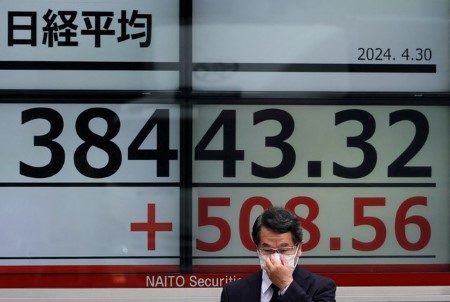




Quarterly Economic Growth Release: More BSP cuts to come
 DOWNLOAD
DOWNLOAD

Monthly Economic Update: Fed catches up
 DOWNLOAD
DOWNLOAD

Inflation Update: Steady and mellow
 DOWNLOAD
DOWNLOAD


Market mood bright, liquidity light

World and US stocks at record highs, a UK general election, and Japanese asset prices stretched to historical levels – there’s a lot for investors in Asia to chew over on Thursday even though liquidity will be thinned out by the July 4 US holiday.
Indeed, markets in Asia may be more vulnerable to higher volatility and outsized moves precisely because trading volumes will be much lighter than usual.
The global backdrop to the Asian open on Thursday, however, looks positive after stocks rose broadly on Wednesday, the dollar weakened and Treasury yields fell – a classic collective market-friendly loosening of financial conditions.
The minutes of the Fed’s June 11 to 12 policy meeting released on Wednesday echoed remarks from Fed Chair Jerome Powell this week that price pressures are cooling. Good news.
More ominously, however, the “vast majority of participants” think US economic activity is cooling too, and this was backed up by disappointing service sector data and another downward revision to the Atlanta Fed’s GDP growth tracker.
Treasury yields tumbled for a second day – wiping out the Donald Trump and French election-fueled spike on Monday – paving the way for another leap to another high for the S&P 500 and Nasdaq.
Currency traders will be extra vigilant for sharp moves in the yen and intervention from Japan to prevent its depreciation from snow-balling, especially with US markets closed.
The yen hit a fresh 38-year low at around 162.00 per dollar on Wednesday. As yet, Tokyo has not shown its hand, and perhaps it won’t – the yen’s decline seems reasonably orderly, and yen volatility across the curve is relatively subdued.
But it’s worth remembering that Tokyo’s last two yen-buying forays into the market on April 29 and May 1 were carried out in illiquid points in the global trading day or holiday-thinned trading. Traders will be on their guard.
Not only is the yen selling off consistently, so too are Japanese bonds. The 10-year JGB yield on Wednesday hit 1.10% and the spread over the two-year JGB yield widened to 75 basis points.
That’s the yen at a 38-year low, the 10-year bond yield around its highest in 13 years, and the yield curve rapidly steepening. Plus, the Nikkei is within a whisker of breaking March’s record high.
These are big levels and big moves for Japanese assets. The potential for some sort of pullback must surely be rising.
Thursday’s economic calendar is light, with only Hong Kong PMI and Australian trade on tap. Friday’s calendar is a lot busier, with inflation from Taiwan, Thailand, and the Philippines, current account data from South Korea, retail sales figures from Singapore, and household spending numbers from Japan all scheduled for release.
Here are key developments that could provide more direction to markets on Thursday:
– Hong Kong PMI (June)
– Australia trade (May)
– Thai central bank chief Sethaput Suthiwartnarueput speaks
(Reporting by Jamie McGeever; Editing by Josie Kao)
This article originally appeared on reuters.com





 By Reuters
By Reuters